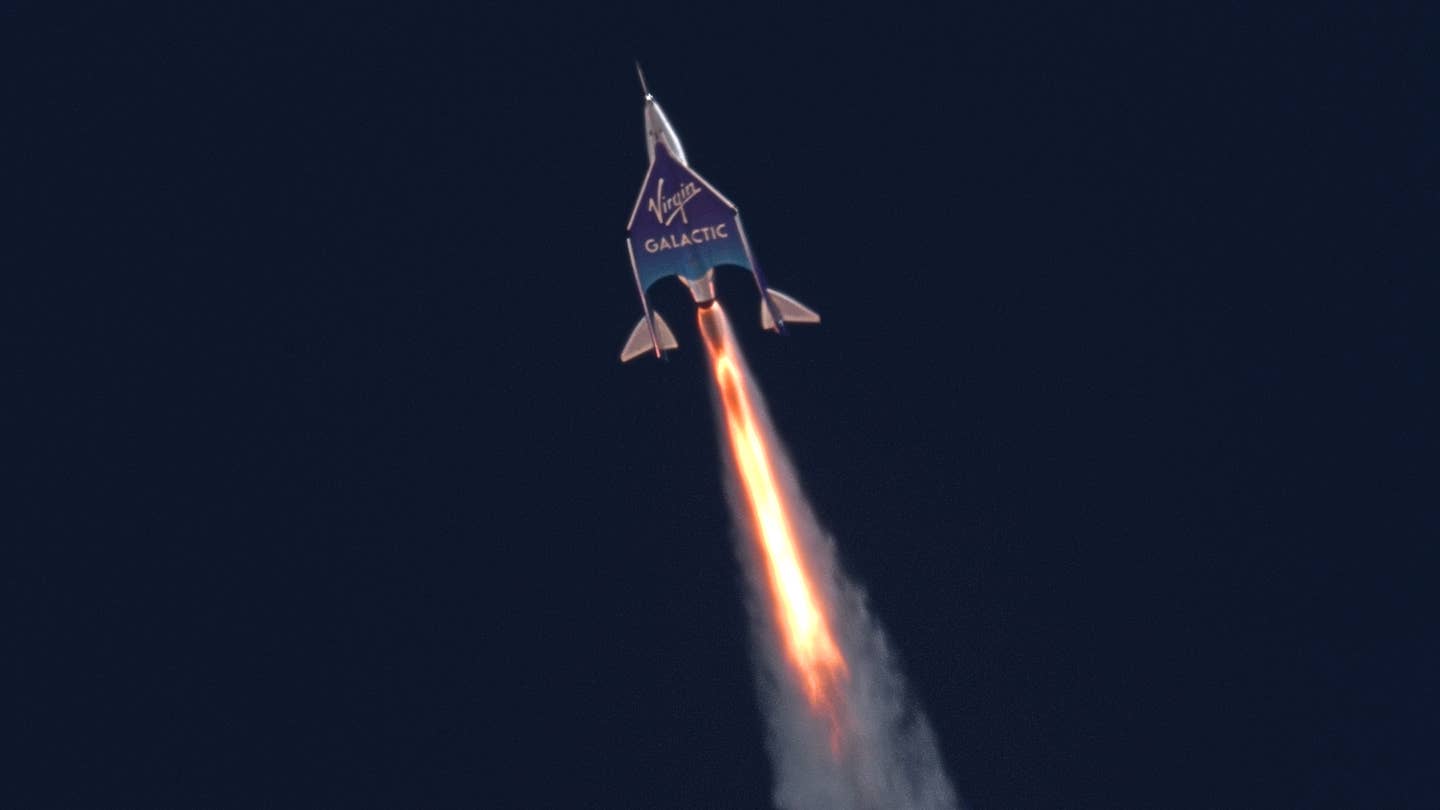Virgin Galactic Launches First Spaceflight with Paying Customers
The company’s VMS Eve mothership and VSS Unity spacecraft took off Thursday morning from Spaceport America.

Virgin Galactic’s VSS Unity with booster engaged during the Unity 25 mission in May. [Courtesy: Virgin Galactic]
New Mexico, we have liftoff.
On Thursday morning, a crew of pilots and Italian researchers and engineers left the grounds of Spaceport America aboard a spaceship, hardly disturbing the sand as it took off from a runway in the middle of the Jornada del Muerto desert.
The spacecraft, VSS Unity, belongs to billionaire Richard Branson’s space tourism firm Virgin Galactic. And its passengers were the company’s first paying customers, who are now headed 50 miles up to the edge of the atmosphere on a research mission.
Thursday’s launch kicked off Virgin Galactic’s Galactic 01 mission, its sixth–ever spaceflight and just its third with humans on board. The firm considers the mission its first-ever commercial spaceflight, taking place nearly two years after Branson's highly-publicized maiden voyage.
Initially agreed upon in 2019, Virgin Galactic’s first mission with paying customers has been planned since 2021 and was originally slated for that year. However, following Branson’s orbital jaunt, the FAA grounded Unity after the spacecraft reportedly veered off course. Less than two weeks later, engineers discovered a 'potential defect' in the ship that led to refurbishing delays.
Those issues kept Virgin Galactic earthbound until May, when it successfully completed the crewed Unity 25 test flight. That was the last planned launch before Galactic 01, and the company now believes its technology has been sufficiently validated for commercial flights.
The Galactic 01 crew aboard Unity consists of three Italian ticket-holders, a Virgin Galactic astronaut instructor, and two pilots.
Italian Air Force Col. Walter Villadei is commanding the flight’s research mission, Virtute 1, which consists of more than a dozen experiments designed to make use of the journey’s zero-gravity environment. Villadei was a backup pilot for SpaceX and Axiom Space’s May Ax-2 mission to the International Space Station and will use Galactic 01 to train for a future mission to the ISS.
Lt. Col. Angelo Landolfi, also with the Italian Air Force, and Pantaleone Carlucci, an engineer with Italy’s National Research Council, round out the paying crew members. They are being assisted by astronaut instructor Colin Bennett, who accompanied Branson on his 2021 spaceflight.
Commander Mike Masucci, who has already been to space three times, and Pilot Nicola Pecile are flying the Unity spacecraft. And VMS Eve, the “mothership” that carries Unity to its launch altitude, is piloted by Kelly Latimer and Jameel Janjua.
Unity and Eve took off in tandem from Spaceport America at 10:40 a.m. EST and climbed together to around 45,000 feet. Virgin Galactic in a livestream called it a "perfect takeoff."
Then, Unity separated, ignited its booster, and began ascending at three times the speed of sound to an altitude of 50 miles—considered high enough to be awarded astronaut wings.
While weightless at the mission’s apex, the Italian crew members conducted their research with a panoramic backdrop of the Earth. Then, through a process Virgin Galactic calls “feathering,” Unity realigned itself toward the Earth, descending and eventually gliding along its wings into a runway landing.
If all goes according to plan, the company expects to launch its second commercial spaceflight, Galactic 02, in August, with monthly missions to follow should it be successful. Those flights will be recreational and more akin to “true” space tourism.
So far, Virgin Galactic has sold more than 800 spots on those flights, with customers paying anywhere between $200,000 and, if they purchased tickets after 2020, $450,000. Branson envisions the company’s fleet growing large enough to eventually handle 400 flights annually.

Subscribe to Our Newsletter
Get the latest FLYING stories delivered directly to your inbox






